 |
||||||||||||||
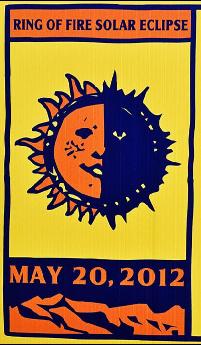 |
||||
On Sunday, 20 May 2012, a rare type of solar eclipse occurred. This is called an annular eclipse because the Moon is too far away in its orbit to completely cover the face of the Sun, leaving a ring, or annulus, around the outer edge of the Moon. Our intrepid group headed to a beautiful viewing spot north of St. George, Utah, near the town of New Harmony.
Our actual spot was a mile or so west of Interstate-15 in the parking lot of a county library. This proved to be a great place to set up as it was out of the dirt and bugs found in so many other nearby locations. It was also away from the media circus which had descended on the "official" eclipse watching site closer to Kanarraville, about six miles from ours, on the east side of the Interstate.
Our group from the Orange County Space Society came well-equipped with telescopes, solar filters, and projection equipment, which made the site a wonderful place for others to find and join us to enjoy the show. In the end we had maybe 100 people or so in our little corner of the eclipse tract, the furthest away driving in from New Orleans.
It's not every day you get to see a hole in the sky placed directly in front of our life-giving Sun. In fact, for Cherie and myself this is the third such annular eclipse we have seen, on top of three total eclipses, so we count ourselves very lucky in this regard. Many of those who joined us that afternoon and evening in Southern Utah were there to experience their first solar event. We all hope this will be just a prelude to many of them seeking out future eclipses, most notably the August 2017 total solar eclipse which will trace a path across the entire United States — our first North American total eclipse since 1991.
First up is the full sequence of the annular eclipse as seen from our site, then scroll down for a selection of photos from the eclipse day events, and a few the following day. |
||||
The annular solar eclipse sequence as seen from outside New Harmony, Utah. (All times are Mountain Daylight Time. Photos taken in visible light with 500mm lens and mylar solar filter.) |
||
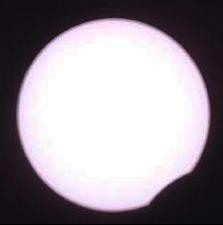 |
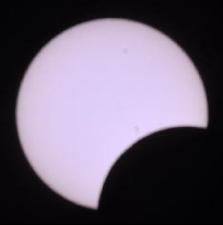 |
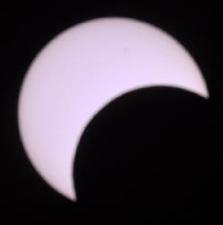 |
 |
|||||
18:25:53 — Soon after First Contact. |
18:46:52 |
19:05:40 |
19:23:49 |
|||||
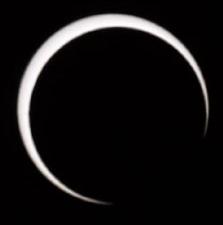 |
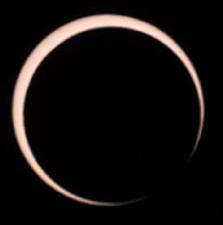 |
 |
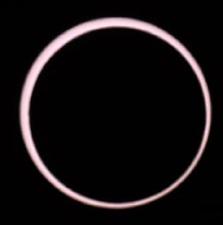 |
|||||
19:31:06 |
19:31:35 |
19:31:43 — Annularity begins. |
19:32:48 |
|||||
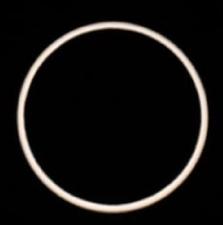 |
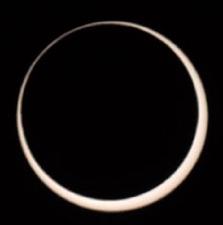 |
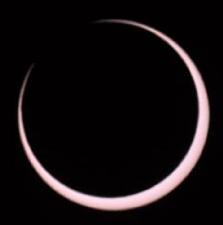 |
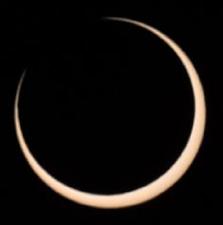 |
|||||
19:33:47 — Mid-annularity |
19:35:48 — Annularity nearly over. |
19:36:16 |
19:36:26 |
|||||
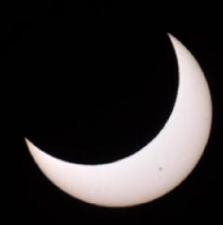 |
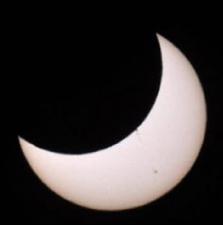 |
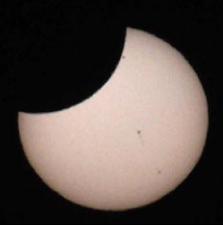 |
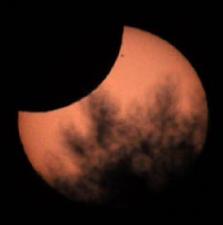 |
|||||
19:49:39 |
19:56:03 |
20:16:07 |
20:16:45 — Sunset. |
|||||
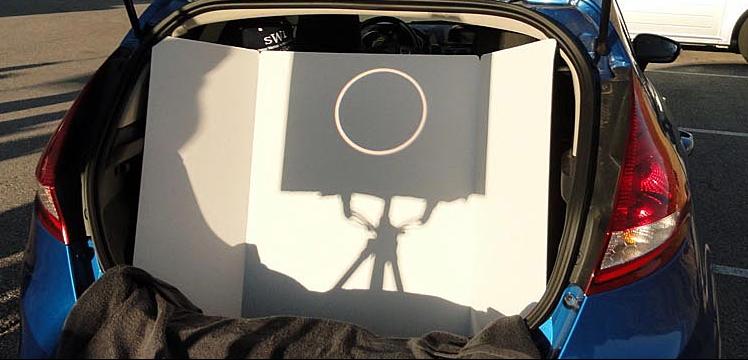 |
||
Proving you don't need expensive equipment to get a spectacular view of the solar event, Rob Lanktree set up this projection system in the back of his car for a great shot during mid-annularity. You can see more of his setup below. |
||
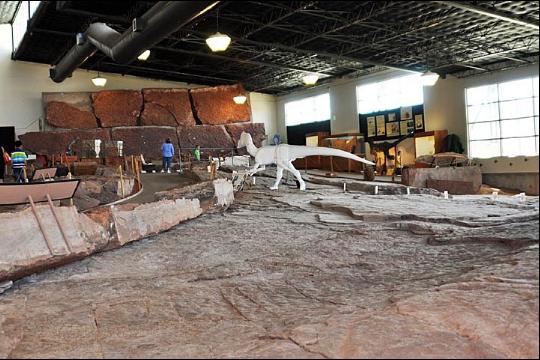 |
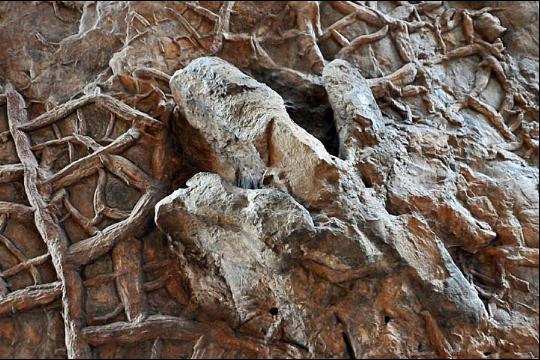 |
|||
Arriving a day early, we visited the Dino Trax site in St. George. |
Fossilized mud cracks surround the footprint of a Eubrontes dinosaur |
|||
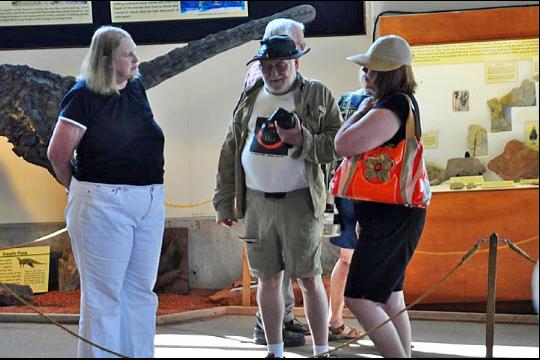 |
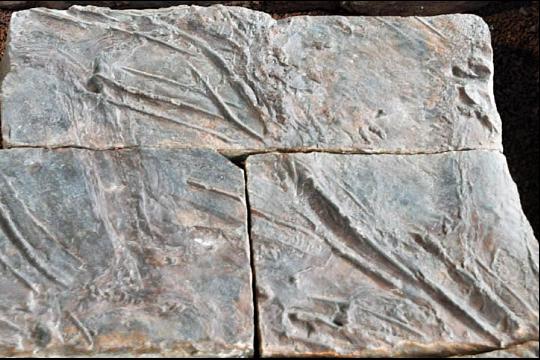 |
|||
Cherie, Jerry, and Sandie discuss the dinosaur tracks and the upcoming eclipse. |
Tracks made in soft mud as a dinosaur swam through shallow water. |
|||
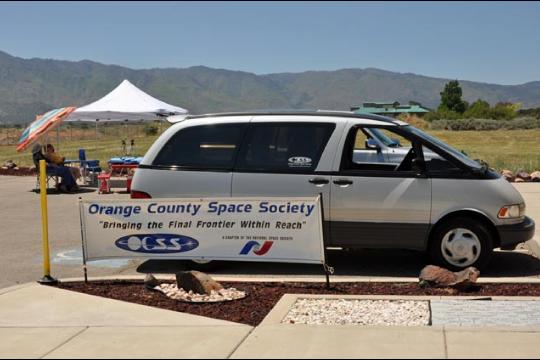 |
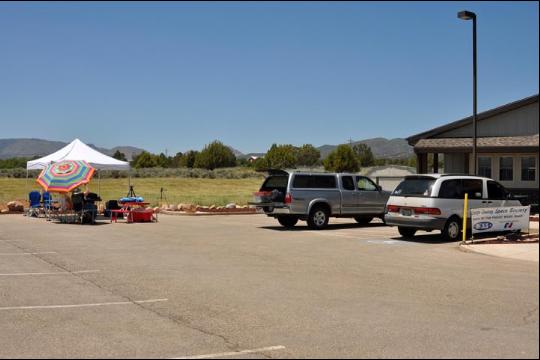 |
|||
Our OCSS annular eclipse site soon after arrival about six hours prior to first contact. Within hours the site would host many more OCSS members and other eclipse chasers. |
||
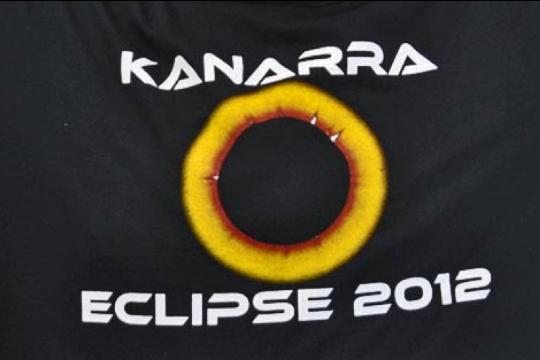 |
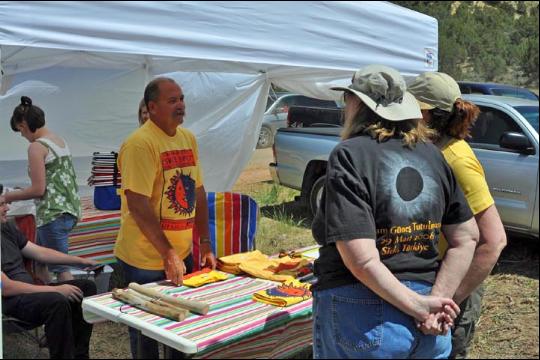 |
|||
One of many (inaccurate) solar eclipse shirts from the Kanarraville site. |
Cherie and Sandie talk to a vendor in Kanarraville. |
|||
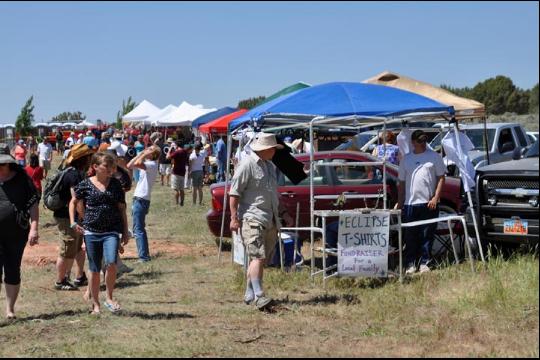 |
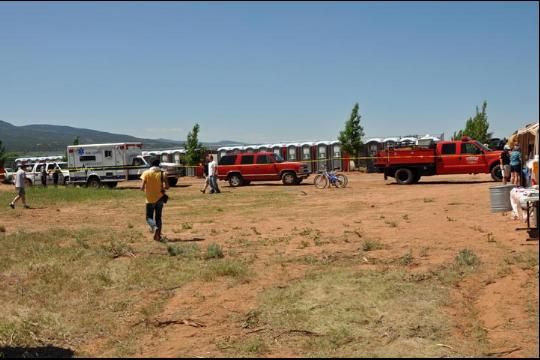 |
|||
The circus-like atmosphere was also fairly dusty, and the ground was hard to traverse. |
Emergency vehicles and several hundred porta-potties at the Kanarraville site. |
|||
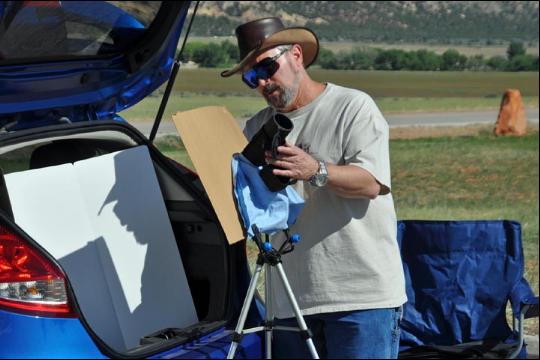 |
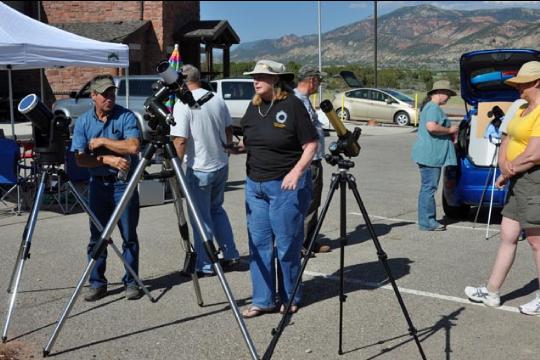 |
|||
Back at our quieter site, Rob sets up to project the Sun as the Moon traverses its disc. |
The three telescopes set up by David Erbas-White. |
|||
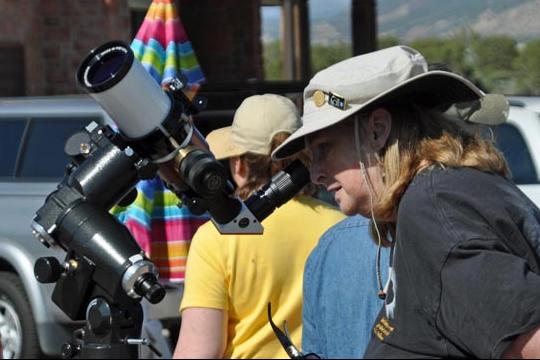 |
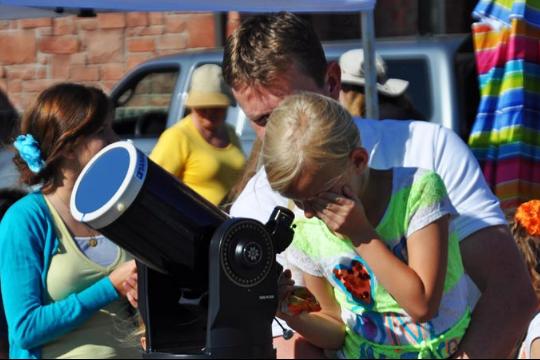 |
|||
Cherie takes a look. |
Many families brought their children to participate in the solar spectacular. |
|||
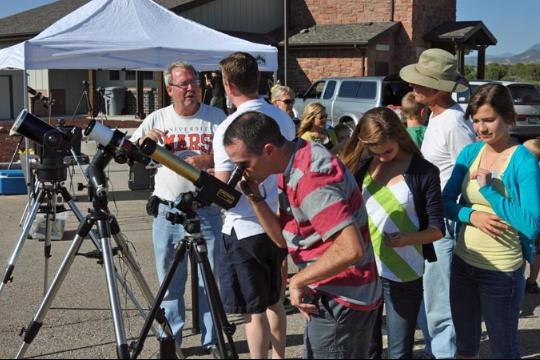 |
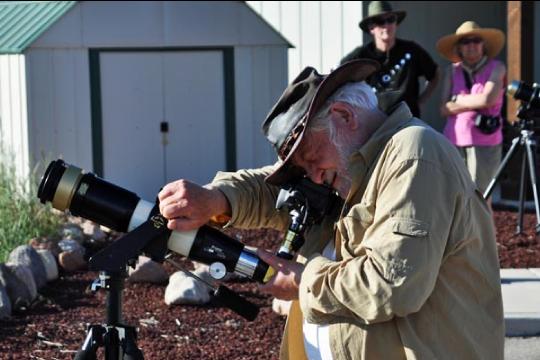 |
|||
Guests line up to view through David's telescopes. |
Jerry Floyd with his solar telescope. |
|||
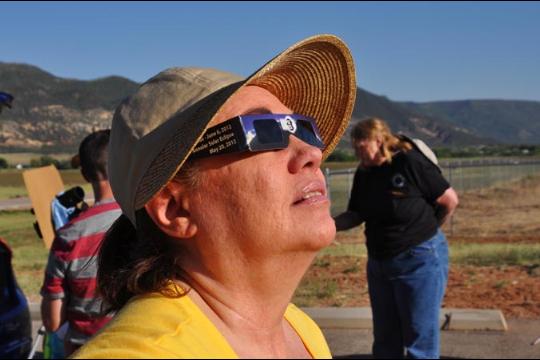 |
||||
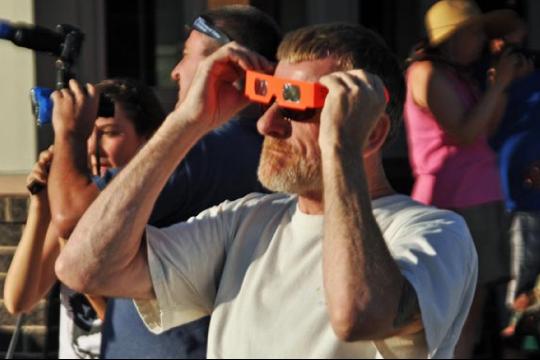 |
||||
Ray Montgomery and Sandie Floyd check out the progress through their eclipse glasses. |
||
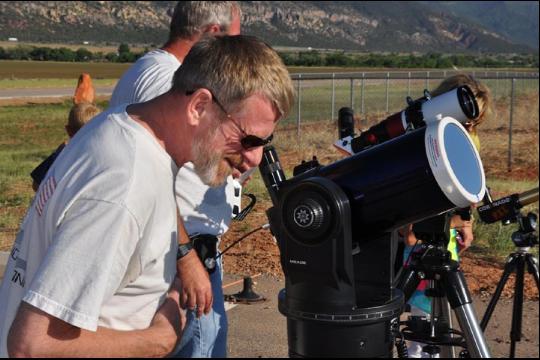 |
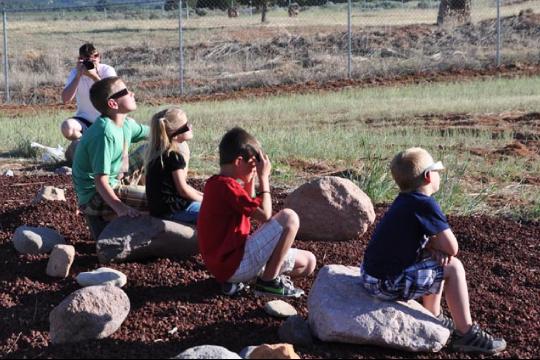 |
|||
Ray checks out the Sun through one of David's telescopes. |
Several of the children all use their eclipse glasses to safely view the event. |
|||
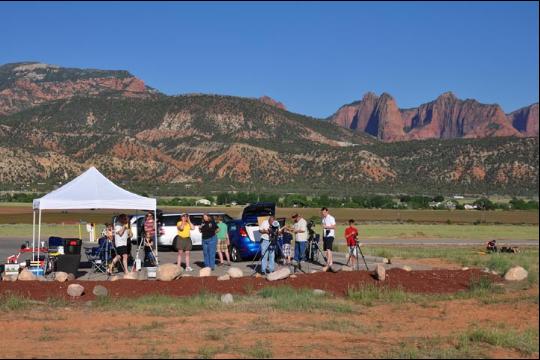 |
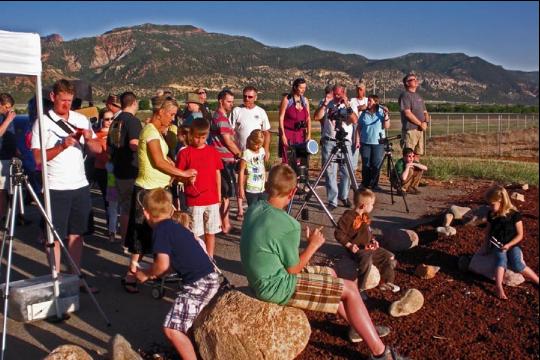 |
|||
A view of the OCSS site early in the day with the spectacular mountains behind us. |
As annularity neared, the crowds grew significantly. |
|||
 |
 |
|||
Late in the partial phase, Rob checks his projection setup. |
Ray and Rhea, catching some eclipse rays. |
|||
 |
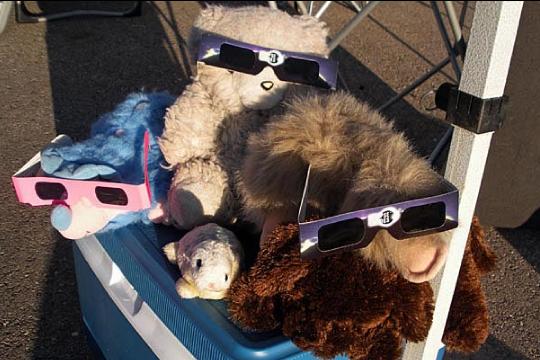 |
|||
A bizarre phenomenon actually created multiple shadows as solar rays focus at different points around the outside of the Moon's disc. |
The kids were all safely watching the eclipse when not creating havoc. |
|||
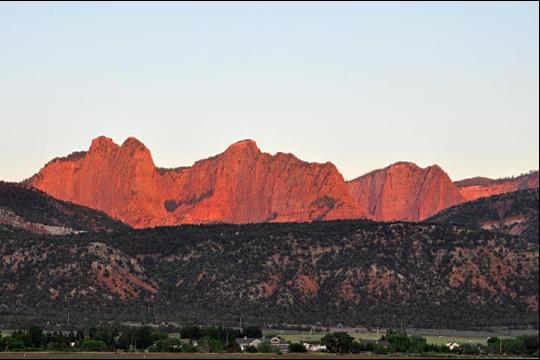 |
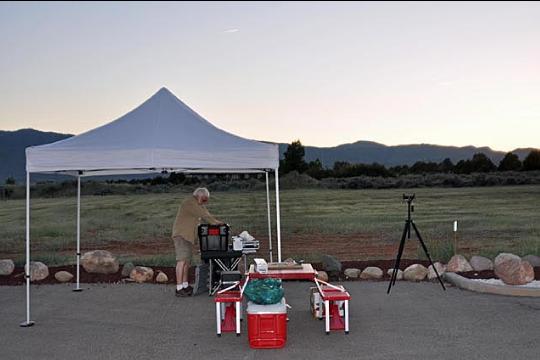 |
|||
As the eclipsed Sun dipped below the horizon, the last rays caught the mountains surrounding Kolob Canyon, directly east of our OCSS site. |
Another eclipse enters the history books. Jerry packs up the last of his equipment as we all prepare to leave. |
|||
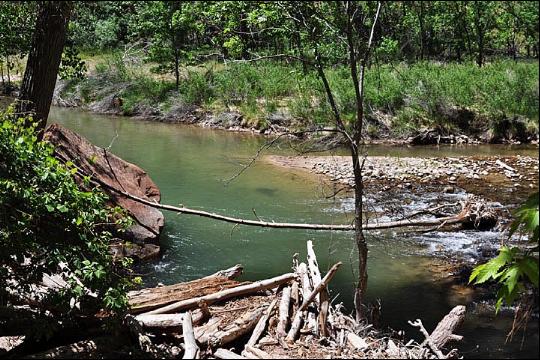 |
 |
|||
The day following the eclipse, Cherie, Ray, and myself toured Zion National Park. |
Cherie and a new family member, Zeke from Zion. |
|||
 |
||||||||
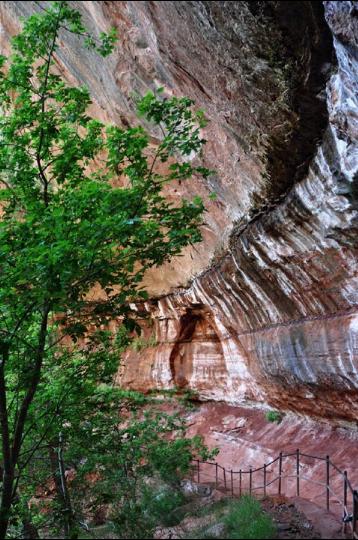 |
 |
|||||||
(above, below, and right) At the Emerald Pools of Zion. |
||||||||
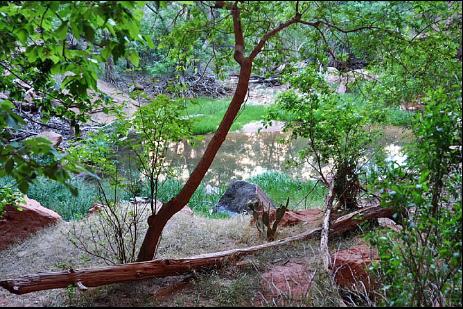 |
||||||||
Explorer Ray. |
||||||||
 |
||||
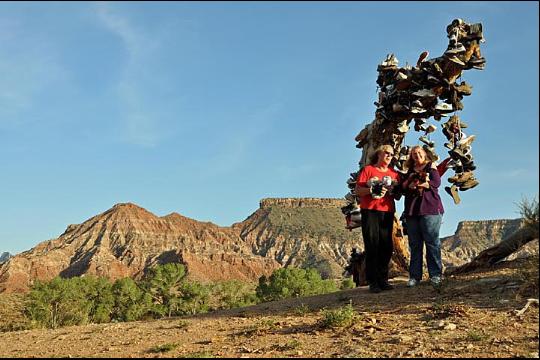 |
||||
A curious onlooker, but he forgot his eclipse glasses. |
||||
Outside Zion, Cherie and I pose for our family portrait at the local shoe tree. |
||||
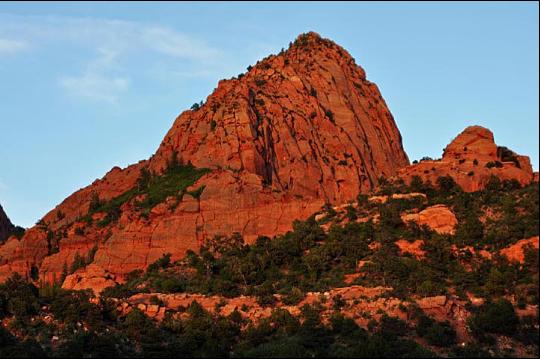 |
||||
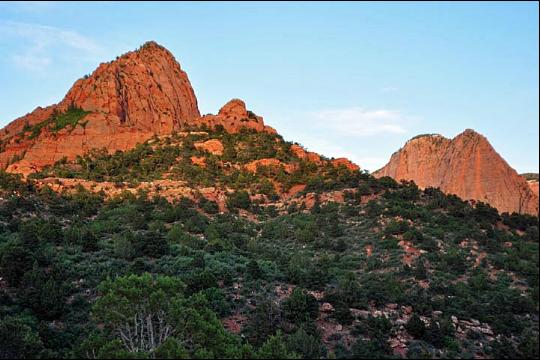 |
||||
Sunset on May 21, close-up to the peaks in Kolob Canyon that we watched during the previous sunset from our eclipse site down in the valley to the west. |
||
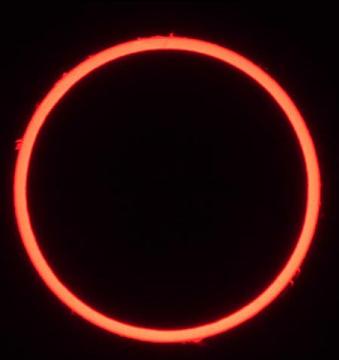 |
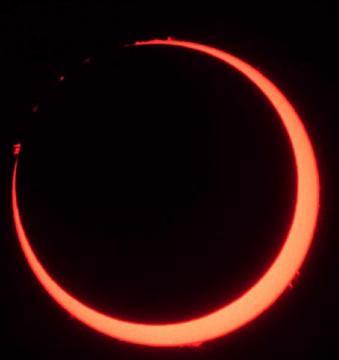 |
|||||
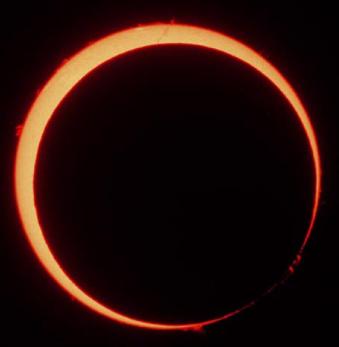 |
||||||
Added Bonus: My friend, John McVey, has kindly shared a series of photographs taken through his Coronado telescope with a Hydrogen-alpha filter. This reveals the huge solar flares along the limb of the Sun which were seen during the eclipse. His photos were taken at Pyramid Lake, Nevada. |
||
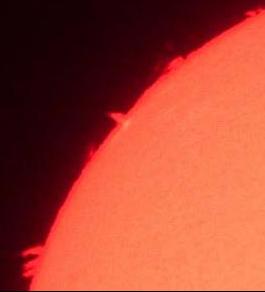 |
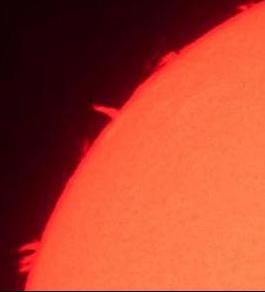 |
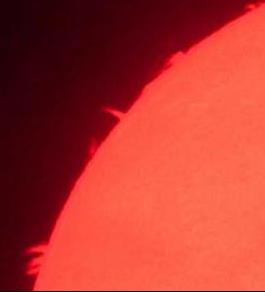 |
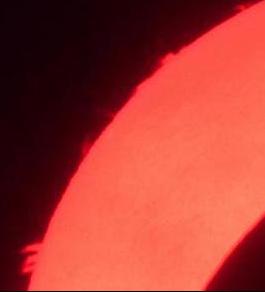 |
|||||
In John's sequence of photos he also caught a solar prominence in action from formation through dissipation. The entire process lasted for only 15 minutes! Note in the far right photo the encroachment of the Moon taking a bite out of the Sun from the lower right corner. Also note the three prominences in the lower left of each photo which remained relatively stable throughout the entire eclipse. This single prominence, although not evident in the photos, was about twice the brightness of the others seen nearby so it was extremely energetic. |
||